Pandemic viewing, Part Two
Continuing my roundup of what I’ve been watching in the past month or so of social isolation…
*
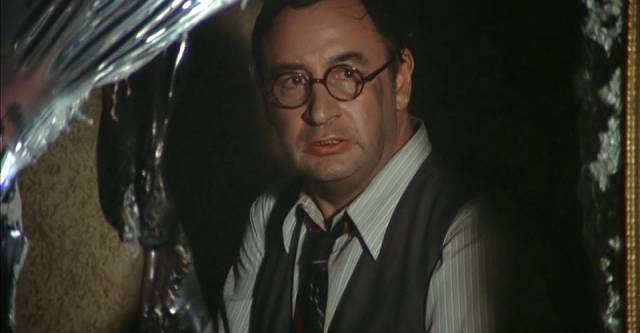
The Old Gun (Robert Enrico, 1976)
I actually saw The Old Gun back in the mid-’70s in its theatrical run and one image stuck vividly in my memory through the ensuing four-and-a-half decades. Turns out that image comes almost at the end of the film and waiting for it may have been a bit of a distraction when I finally saw the film again a few weeks ago. I’m not entirely sure what I think of the movie. It’s well-crafted, with good performances – particularly from Philippe Noiret; Romy Schneider is lovely as always, but her character is limited because she mostly exists only in the protagonist’s memories. The story is about a French doctor who’s more concerned with saving lives than the politics of Occupation and Resistance; that is until a unit of bestial Germans slaughter his family for their own amusement, at which point he methodically stalks and kills the soldiers (leading to that image involving a mirror and a flamethrower, which visually transforms his vengeance into something almost supernatural). In the end, the point of The Old Gun seems to be that war makes beasts of us all … not exactly an earth-shaking revelation. But I’m glad I finally got to see it again and discovered that my memory fragment was totally accurate. (MGM Limited Edition Collection DVD, no extras)
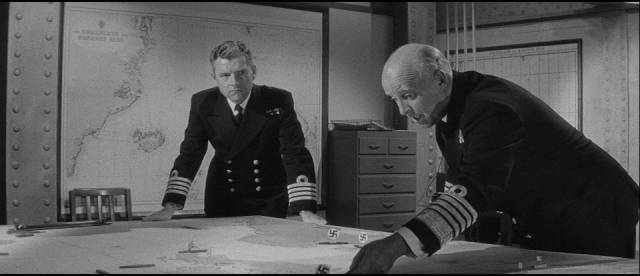
Sink the Bismark! (Lewis Gilbert, 1960)
By 1960, almost a generation after the end of the War, movies were beginning to go through a transformation, gradually turning the War into an adventure rather than an existential threat to survival – within a few years, big name stars would be displaying overblown heroics in movies like The Great Escape, Von Ryan’s Express and The Dirty Dozen. A military procedural like Lewis Gilbert’s Sink the Bismarck! already looked old-fashioned by the time it was released. But within its wartime genre trappings, it’s an effective piece of (somewhat fudged) history, with psychologically stressed commander Kenneth More in charge of trying to coordinate the sea hunt for Germany’s most powerful battleship, sending quite a few British ships and their crews to their doom in the process. Command is hell and sacrifices must be made, but that doesn’t make him a bad man … it’s war again, forcing decent people to do terrible things for the greater good …(Eureka BD, with an interview with film historian Sheldon Hall untangling history from creative license)
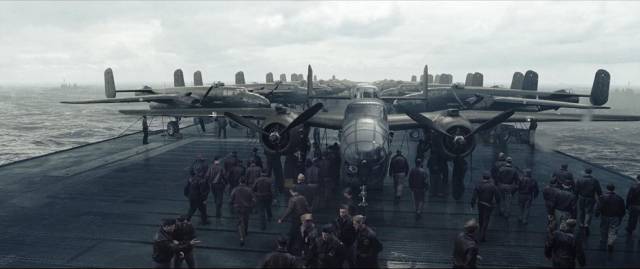
Midway (Roland Emmerich, 2019)
It’s never a good sign when you come across a recent blockbuster that you’ve heard nothing about – no promotion, no reviews. How did Roland Emmerich’s Midway manage to sink without trace considering his history of box office success and the obviously high budget? The movie essentially blends the no-nonsense approach of Sink the Bismarck! with the whiz-bang spectacle of long CG air and sea battles. The guys in charge are played by some grizzled familiar faces (Dennis Quaid, Woody Harrelson), while the guys doing the fighting and their wives fretting back home are mostly less familiar and somewhat interchangeable. Thankfully, the personal drama is kept in check as the 138-minute movie concentrates on what happened and how. Perhaps Emmerich’s most notable accomplishment was squeezing Michael Bay’s Pearl Harbour, complete with the Doolittle raid on Tokyo, into about half an hour. (Elevation Pictures BD, with commentary, plus multiple featurettes on the production and the history)
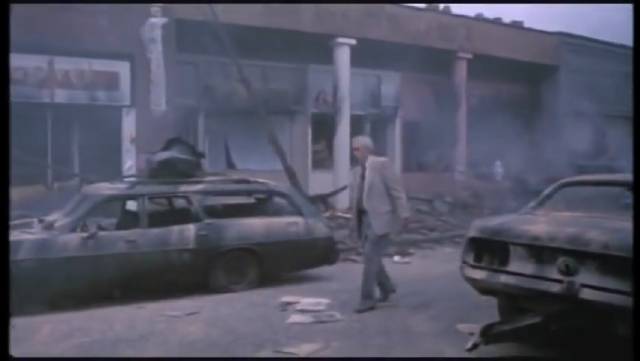
The Day After (Nicholas Meyer, 1983)
For decades I’ve had a fairly low opinion of Nicholas Meyer’s The Day After. In my memory it was weighed down by a lot of soap opera-like “drama” and ended on an upbeat note – despite the disaster of nuclear war, things would be getting back to normal. It was impossible to separate that impression from the devastatingly realistic impact of Mick Jackson’s Threads, made the same year. So I was taken by surprise when I recently watched Meyer’s film again; yes, there are cliches – the idyllic montage of small town life, rolling fields of grain, kids playing, American flag, with which it opens – but Edward Hume’s script, after introducing all the characters, gets down to business quickly with the geopolitical steps escalating towards a stupidly inevitable, mutually destructive nuclear exchange between the U.S. and the U.S.S.R. From there, worse goes to worst and it ends on a note of bleak hopelessness. In retrospect, I’m not sure where my faulty memory actually came from. (Kino Lorber BD, with two versions – TV and slightly longer theatrical – a commentary and two interview featurettes)
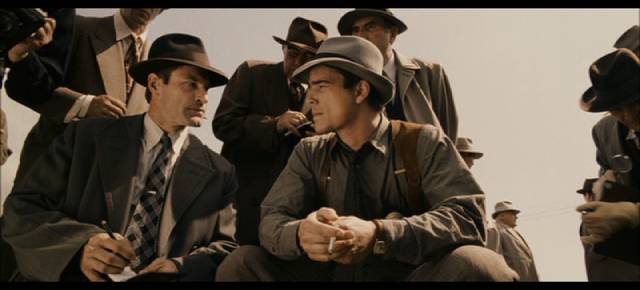
The Black Dahlia (Brian De Palma, 2006)
To some degree, I gave up on Brian De Palma in the mid-’80s after the repellent double whammy of Scarface and Body Double. Which is not to say that I didn’t see any of his subsequent movies, just that I approached them with low expectations – which generally turned out to be justified (Casualties of War, Bonfire of the Vanities, Raising Cain, Mission: Impossible, Mission to Mars). So I hadn’t seen The Black Dahlia before I picked it up for 99¢ in a bargain bin. I was already familiar with the real case and was interested to see how De Palma would approach it (and what kind of solution he might offer). What I hadn’t expected was the sheer weirdness of the movie; it seems to have been made by someone who has completely forgotten how to tell a story … it’s not actually about the Elizabeth Short murder, but rather about a couple of cops with serious psychological problems. Nothing seems to lead to anything else, incidents merely following one another in random order. There’s no sense of unfolding revelation (the essence of a mystery), no sense that we’re approaching any kind of resolution. I had to force myself to stick with it and when it was over, I wished I hadn’t wasted the time. (Universal BD, three featurettes)
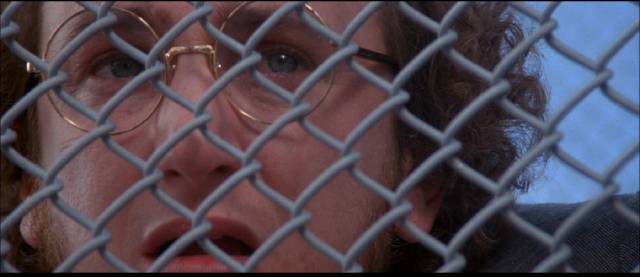
Carlito’s Way (Brian De Palma, 1993)
So given that, why would I take on Carlito’s Way, particularly since it seems to be framed as a return to Scarface – Al Pacino as a former drug lord newly released from prison. David Koepp’s script piles on familiar genre tropes – Pacino has decided to go straight, but his former associates keep dragging him back in. It’s almost like a cartoon version of any number of gangster movies we’ve already seen, and Pacino is going full-throttle with his mannered performance style. Not that it lacks some interesting elements, in particular Sean Penn’s wildly eccentric performance as Pacino’s coked-out Jewish lawyer who lives in a constant state of hyper-active paranoia; this guy is so erratic and delusional that it’s hard to swallow that his client sticks with him out of simple gratitude, particularly when Penn uses him to kill off some powerful gangsters. De Palma ramps things up melodramatically as he did in Scarface, but Carlito’s Way turns out to be more entertaining if no less absurd. (Universal BD, deleted scenes and making-of featurettes)
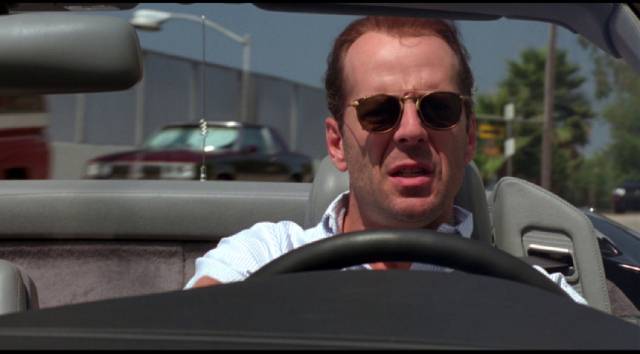
Color of Night (Richard Rush, 1994)
Which is not to say that I have anything against ramped up melodrama … it all depends on what the director does with it. I know I’m in the minority when it comes to Color of Night, but despite critical derision when it was released, I liked it in the theatre in 1994 and I still liked it when I recently watched the director’s cut. Richard Rush, whose career has been erratic, but who will always have a place in the pantheon thanks to The Stunt Man (1980), takes a contrived, overwrought psychological thriller which would have felt at home in the 1940s when Hollywood most enthusiastically embraced psychoanalysis, and dresses it in neon colours, adding sex and Bruce Willis with his patented ironic distancing technique which lets you know that he knows this is all amusingly excessive make-believe. Bruce is a traumatized psychologist forced to take over a group after his friend is murdered, possibly by one of his patients – all of whom are afflicted with wildly exaggerated conditions. I love the movie’s every excess. (Kino Lorber BD, with two versions – theatrical and director’s cut – plus two commentaries)
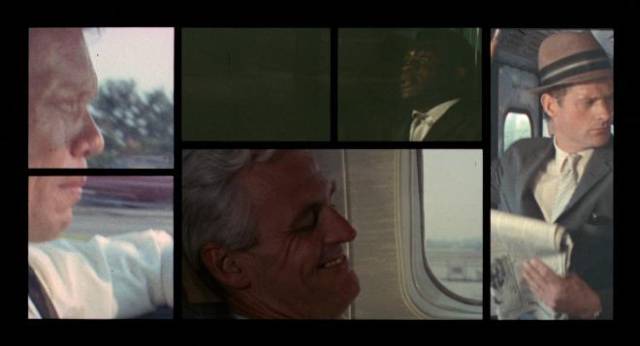
The Thomas Crown Affair (Norman Jewison, 1968)
No comparable pleasure can be gleaned from Norman Jewison’s vacuously “stylish” thriller about a high-powered businessman who moonlights as a criminal mastermind and the glamorous insurance investigator on his trail. No effort is expended in constructing an engaging plot – it’s all about glamour, wardrobe, the visual pleasure of movie stars, and an exhausting overuse of the then-popular split-screen editing. It’s the kind of movie in which the insurance investigator is shown a bunch of photos and points to one, saying “that’s him” based on no apparent evidence other than that he’s the one she wants to go to bed with. I remembered it being glossy fluff – I didn’t remember how unutterably boring it is. (Kino Lorber BD, with two commentaries and three featurettes)
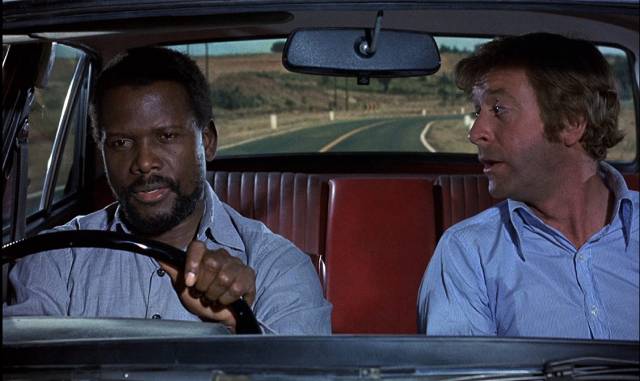
The Wilby Conspiracy (Ralph Nelson, 1975)
Ralph Nelson’s apartheid thriller is another movie I saw in its original mid-’70s theatrical run and remembered with a vague fondness. I’m happy to say that it holds up quite well. Nelson was a solid craftsman who could turn a decent script into a solid entertainment, but occasionally fumbled weaker material. Based on a novel by Irish writer Peter Driscoll, who had first-hand experience with South Africa, The Wilby Conspiracy was released at a time when apartheid was not a commercial subject. The movie shows South Africa to be a brutal police state, with the majority Black population living under occupation. English businessman Michael Caine finds himself inadvertently and unwillingly drawn into the world of the oppressed when he steps in to prevent an incident of police brutality and goes on the run, taking anti-apartheid activist Sidney Poitier hundreds of miles to the border, only to discover that he’s being manipulated by brutal secret police officer Nicol Williamson. A great example of how popular entertainment can actually educate its audience about real issues. (Kino Lorber BD, no extras)
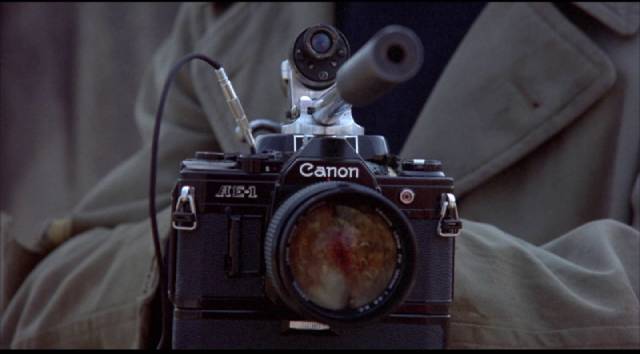
Stone Cold Dead (George Mendeluk, 1979)
There’s not a lot to say about Stone Cold Dead, except that it was adapted and directed by George Mendeluk as his first feature before a long career mostly in television. The source was The Sin Sniper, a novel by award-winning British-born Canadian writer Hugh Garner, about a cop investigating a series of killings in Toronto, all the victims prostitutes shot with a high-powered rifle and photographed at the moment of death. The pictures are used to taunt the police. Richard Crenna is stolid as the cop on the case; Paul Williams is implausible as a powerful pimp. And there’s a big surprise twist at the end. But mostly it’s a plodding effort from the tax shelter years. The print used as the source for this disk is in excellent shape, though, with an image which belies the quality of the movie. (Kino Lorber BD, with a short interview with Mendeluk and a commentary)

Like Me (Robert Mockler, 2017)
Larry Fessenden has supported a lot of young filmmakers through his production company Glass Eye Pix, something like a latterday Roger Corman. As a producer, he’s worked with numerous directors from Ti West to Kelly Reichardt … though I wish he’d put more time into making his own movies (there was thirteen years between The Last Winter and Depraved, with only the disappointing work-for-hire Beneath in between). Robert Mockler’s debut feature is one of his most interesting productions, a neon-coloured horror about a sociopathic young woman who travels around subjecting men to severe humiliation and then posting videos of it on the Internet. Her expanding viewer base watches both to condemn her behaviour and to spur her into more outrageous actions. The message that social media breeds and/or amplifies horrific behaviour may not be original, but Mockler embodies it with visual flair and Addison Timlin is chilling as the sociopath. (Kino Lorber BD, with making of featurette)
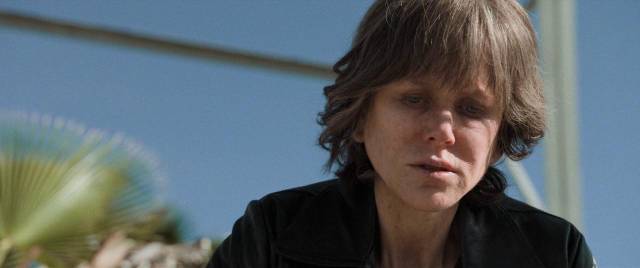
Destroyer (Karyn Kusama, 2018)
If making the viewer uncomfortable was a sign of art, then Karyn Kusama’s nihilistic cop movie would definitely be art. It may also just be a filmmaker wallowing in ugly sordid genre tropes for the sake of flaunting transgression. What isn’t in question is that this is one of those cases where a beautiful actress makes herself blatantly ugly to assure the audience that she really is a great actress. Like Charlize Theron in Monster, Nicole Kidman dares you to keep looking as she gets gaunt and grimy – you can practically smell the booze and stale sweat oozing out of her. The circular story, shifting back and forth in time, shows how she got here by making some bad decisions while on an undercover job involving a bank robbery that goes spectacularly wrong. The resulting guilt plunges her into alcoholism which somehow doesn’t get her suspended or kicked off the force. Given a chance to redeem herself, she goes rogue with increasingly violent consequences. Karyn Kusama directs with the gritty conviction of Kathryn Bigelow, but in the end it all feels kind of empty and pointless. (Elevation Pictures BD, with two commentaries and a making-of)
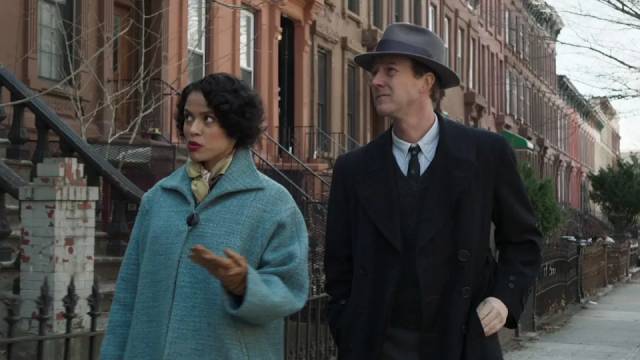
Motherless Brooklyn (Edward Norton, 2019)
I was a bit wary when I picked up Edward Norton’s second feature (made nineteen years after the first). It had the look of a vanity project – Norton wrote, produced, directed and starred – an impression reinforced when I learned that the lead character (Norton) was a private eye with Tourette’s Syndrome. Hard to see how that could remain bearable for two-and-a-half hours. And yet … and yet … this adaptation of a sprawling Jonathan Lethem novel, transposed by Norton from the present to the 1950s, with a lot of NYC political and social history grafted on, is one of the most riveting movies I’ve seen in a while … and may well be the best American private eye movie since Roman Polanski’s Chinatown (to which it seems to owe a lot). A murder leads deep into multiple layers of life in the Metropolis – from slums to City Hall, from crooked politicians to Black communities being bulldozed to make way for urban development. Norton directs with skill and carries off the Tourette’s thing brilliantly. Great movie. (Warner BD, with commentary, deleted scenes and making-of)
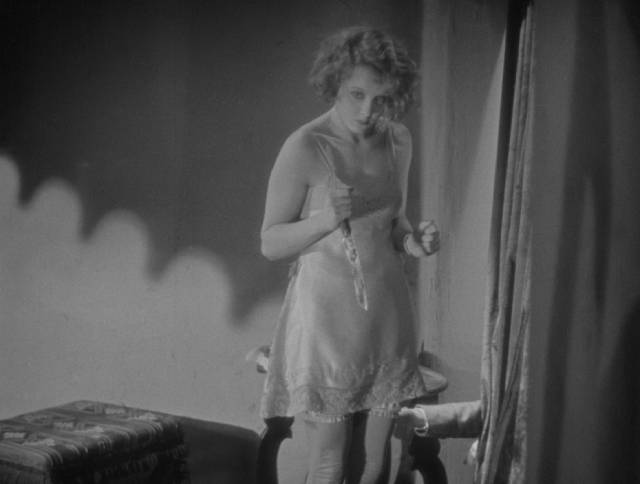
Blackmail (Alfred Hitchcock, 1929)
Hitchcock’s first sound film is noted for his creative use of the new medium (the breakfast scene in which the word “knife” overwhelms the heroine), but it’s more interesting for its problematic moral tone (for the time), with the heroine being subjected to an attempted rape, stabbing her attacker to death, and then having to deal with a sleazy blackmailer … all while her fiance is the Scotland Yard detective investigating the murder, who knows she’s the killer and covers up for her. With the blackmailer chased to his death at the British Museum, the young lovers are left with their shared guilt… The Kino Lorber edition presents three different transfers on two disks – the shorter silent version, and the longer sound version (with some sequences different from the silent, obviously) in two different aspect ratios – both incorrect unfortunately! One is vertically stretched, the other horizontally stretched. While this is only mildly distracting while you watch, it makes you wonder what the disk producers were thinking. (Kino Lorber BD, with a Tim Lucas commentary on the talkie, audio excerpts from Truffaut’s interviews with Hitchcock, and an introduction by French critic Noel Simsolo)
To be continued…
Comments